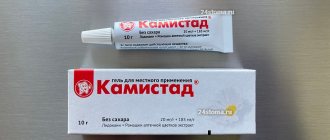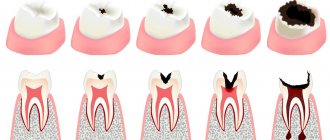In any book of folk recipes you can find medicinal remedies based on garlic. Even in ancient times, people knew about the bactericidal properties of this vegetable with a special spicy taste. And connoisseurs of good traditions still use it to treat all kinds of ailments. Those who understand the basics of grandmother’s “potions” assure: garlic will help with toothache much better and faster than pharmaceutical drugs: it will kill germs and alleviate suffering.
Having become acquainted with garlic recipes of traditional medicine, a person will discover an interesting fact: garlic is used for dental treatment in a variety of forms. It can be finely cut or rubbed for compresses. A piece of vegetable can be placed in a carious cavity. It can also be used to prepare an effective tincture for any type of home therapy: rinsing, rubbing, or ingesting. Even a clove of garlic applied to the wrist has miraculous powers, healers convince.
How true are these facts? This needs to be sorted out
Garlic and a bad tooth – are they compatible?
If you take an ordinary clove of garlic and subject it to chemical analysis, then among the substances detected there will not be even a single mild analgesic. Therefore, you should not see a garlic clove as a pharmaceutical tablet against acute pain and expect an immediate miracle when applying it to a tooth.
Garlic contains a lot of medicinal components, including for toothache.
But there are about 400 (!) active medicinal components, among which the most useful for a diseased tooth are:
- Allicin
- Phytonutrients
- Phytoncides
These elements are the enemies of any pathogenic microflora, which is always present in the patient’s body. By using garlic for dental treatment, a person simultaneously ennobles all systems of the body and improves his immunity.
Allicin is especially needed in the fight against microbes, as it kills all kinds of viruses, bacteria, and fungi. Moreover, this component is not an “innate” free element in the plant. It appears when vegetable cells are subject to mechanical damage - vacuoles enter into a chemical reaction with the cytoplasm, resulting in the formation of allicin.
So why does garlic relieve pain? It is easy to guess that the bactericidal talent of this vegetable contributes to a sharp decrease in harmful microflora. As a result, the source of inflammation, which causes pain symptoms, for example, with inflammation of the gums, calms down.
Therefore, the answer to the question of whether garlic eliminates pain itself is: no. It only acts on certain root causes of this pain, helps to stop inflammatory processes and thereby alleviates the patient’s condition. But garlic can provoke acute pain if used incorrectly.
How people harm themselves
Allicin is a very active substance, which means it is aggressive. Prolonged contact with the component can easily cause a burn to the oral mucosa.
And if we talk about diseased teeth, then it is very dangerous to put pieces of vegetables into deep carious holes - after all, the pulp (dental nerve) is still alive and suffers even from mild irritants, such as a breath of cool wind or regular brushing of teeth. What happens if a destructive drop of allicin “touches” the inflamed pulp?
With deep caries, the cavity in the tooth can extend almost to the pulp chamber itself, in which a ball of blood vessels and nerves is located. A tooth with caries always hurts sharply - this indicates that the pulp has not yet died and reacts to any irritants. Therefore, the dentist always removes this tangle, which has caused the patient’s sleepless nights.
Dentists say that when garlic hits the nerve of a diseased tooth, a thrill is guaranteed.
The person himself forever remembers that unbearable feeling when a piece of sweet or salty food landed in a carious hole... But for some reason he thinks that a sharp piece of garlic will somehow have a different effect on the dental nerve, and shoves it into the cavity. In this case, thrills are guaranteed.
Sometimes toothache is a consequence of inflamed gums. In the resulting pocket in the gums, pieces of food accumulate and decompose. And people rush to apply a piece of garlic to the source of pain. They heroically endure the burning pain, believing that this is how “garlic works,” and meanwhile a burn forms on the gum. Its damage is not inferior to complications after inflammation, although the bacteria could have been killed in ways that were not so blasphemous to oneself. Among them is simple clean water with salt. It perfectly washes away food debris, pus and harmful microbes from the gum pocket and carious cavity. At the same time, such rinsing does not cause burns.
Attention! Sometimes patients are especially patient and steadfastly withstand the acute pain from a piece of garlic in a carious hole, and a day later the pain suddenly disappears... This is not a reason for joy at all. Just a dose of allicin killed the pulp, and the dead tissue of the nerves and blood vessels will soon begin to decompose in the tooth. If the resulting pus does not find a way out, everything can end very badly.
Folk remedies will never replace proper treatment at the dentist!
Beneficial features
Garlic owes its antiseptic effect to allicin in its composition. The substance is characterized by pronounced fungicidal and bactericidal properties.
Allicin in garlic is formed due to a mechanical effect on the structure of cells; it is not contained in the product in its free form.
The chemical composition of garlic is rich in sulfide components . Their action is detrimental to staphylococci and some types of fungi. Thanks to these elements, blood clots are well absorbed.
In addition to sulfides, the product contains more than 100 chemical compounds , including zinc, selenium, and germanium. Phytoncides with high biological activity are perfectly combined with the enzyme lysozyme, fatty oils, magnesium, iodine, calcium, and B vitamins.
The analgesic effect of garlic is due to a decrease in the number of pathogenic microorganisms that cause the inflammatory process.
When garlic and salt are combined, it is possible to reduce the flow of pus in the area of the affected tooth. This tactic is accompanied by a burning sensation. The reaction to an aggressive product stimulates blood circulation in the oral cavity, accelerating the delivery of immune cells.
Garlic tincture or exposing healers
Among the folk remedies made from garlic for toothache, there is one simple recipe - garlic tincture.
The “potion” is very easy to prepare. Weigh out 100 grams of garlic, crush it or grate it, pour half a liter of vodka into the mass, then leave it to harden for 14 days. After which the healing liquid is decanted and rinsed in the mouth, or passed inside. As a rule, drinking garlic tincture is preferred primarily by connoisseurs of strong drinks, and not by real toothache sufferers. But tincture of garlic inside is a double load on the gastric mucosa: ethyl alcohol and allicin.
If the first option is more harmful than beneficial, will the second option, rinsing, help? Sometimes it really helps. Effective garlic phytoncides float in the tincture, which destroy harmful bacteria on the surface of the gums and somewhat relieve inflammation. Ethanol itself also has antiseptic properties and dilates blood vessels, which makes the pain subside a little.
Garlic tincture can help with gum disease
Thus, for ailments associated with gums, rinsing with garlic tincture can be effective. But ordinary sage/chamomile decoctions or oak bark tincture will have a similar effect. In addition, their “strength” does not need to wait 2 weeks. During this time, inflammation can already cross the boundaries of what is permissible and drive the patient to the hospital.
If toothaches are caused by deep caries, there is no point in waiting for the garlic miracle potion to infuse - it will simply be useless.
Garlic compress on the wrist - medicine or superstition?
When the ancestors put this vegetable on their wrists, what were they thinking? Those who have never dealt with traditional medicine see something superstitious in this method. In their opinion, only magic spells can be more absurd.
Garlic compress (popular name “Siberian recipe”) is made as follows:
A clove of garlic is thoroughly crushed until it turns into pulp. The mass is then placed on the area of the wrist where the pulse is felt. Secure the medicine with a strong, thick bandage. Some people don’t crush the garlic, but simply cut a clove in half and press the cut side to their wrist. Treatment nuance: if a tooth hurts on the right side, then a compress is applied to the left wrist, and vice versa.
It is interesting that to this day no one can explain what the effect of such a remedy is. Proponents of traditional medicine are trying to defend their positions, but their evidence base also branches into several different “guesses”:
- Different points of the human body are connected to nerve nodes, and if you apply garlic mass to the wrist point, you can somehow block the path of pain signals to the brain.
- When garlic irritates the sensitive skin of the opposite wrist, a strong burning sensation begins, which distracts the patient from the tooth and the side on which it is located.
- Garlic phytoncides penetrate through the skin into the circulatory system and dull the perception of pain by the entire body.
There are many followers of garlic compress on the wrist.
As can be seen from the evidence points, garlic on the wrist is a very versatile solution to the situation. By the way, this method has a lot of supporters, although it usually ends with the person simply receiving an additional source of pain to the existing one.
Proven Recipes
Compresses with garlic, taking the seasoning internally, and applying a clove directly to the causative organ help relieve discomfort. There is also a non-standard option with tying a garlic clove to the wrist.
Each method requires proper preparation of the medicine and compliance with the necessary precautions when using it.
Garlic-onion compress
To prepare, you must first finely grate the onion and garlic, 1 teaspoon each. Add the same amount of table salt. Mix all ingredients thoroughly.
The finished product is applied directly to the tooth, covered with a cotton pad on top and pressed. You can wrap the pulp in gauze. Both methods protect the gums from burns.
Pain relief is due to the double action of the compress:
- Salt cleanses of pathogenic bacteria and relieves swelling during inflammation.
- Vegetable juice, saturated with phytoncides, suppresses the activity of pathogenic microorganisms.
The effect of the compress is limited to 10-15 minutes.
The appearance of a strong burning sensation and increased pain requires immediate discontinuation of therapy and rinsing the oral cavity with warm water.
The appearance of an allergic reaction to the compress requires its immediate removal, rinsing the mouth with warm water and taking antihistamines.
Oil based
To prepare the product, garlic is grated on a fine grater and pounded in a mortar. For 1 part of the crushed gruel, take 2 parts of oil and mix thoroughly.
The best effect is achieved when using peanut oil. But, in its absence, sunflower, corn or olive oil can be used.
The finished mixture is used as a compress for the gums or applied directly to the tooth. The exposure time should not exceed 15 minutes.
In most cases, the presence of oil in the recipe provides protection against chemical burns to the mouth. But if a strong burning sensation occurs, you must immediately stop treatment and rinse your mouth thoroughly with warm water.
What means of remineralization of teeth are used in modern dentistry and the procedure for carrying out the procedure. In this article we will tell you what to do before seeing a doctor if a filling has fallen out.
Here we will talk about the cost of laser dental treatment.
Bread based
To reduce the irritating effect of garlic, rye bread can be used when making a compress. Just soak it in water and mash it into a paste.
It is mixed in equal proportions with finely grated garlic. Mix everything until a homogeneous mass is obtained.
Before applying the compress, the affected area must be cleaned. To do this, rinse with warm water. It is recommended to add table salt to it at the rate of 1 tsp. for 250 ml.
The compress is applied to the gum of the diseased tooth for no more than 20 minutes. After the procedure, the oral cavity is thoroughly rinsed with salt water until all traces of the drug are removed.
Grandma's recipe
An unconventional way to relieve toothache is to apply garlic to your wrist. The recipe comes in two versions.
In one case, the seasoning, grated, is applied to the wrist, covered with a cotton pad and secured with a medical bandage. The second option involves using a large clove cut lengthwise.
To achieve the desired effect, garlic is applied at the point where the pulse is clearly palpable. If the diseased tooth is located on the right, then the medicine is tied to the left wrist. Similarly for the diseased tooth on the left.
The method compares favorably with all others in that there is no need to consume even a small amount of garlic juice internally, which is dangerous in the presence of pathologies of the digestive system.
When referring to your grandmother’s recipe, the possibility of a chemical burn to the pulp or oral mucosa is eliminated.
Interesting! There is still no exact explanation of the mechanism for relieving toothache using garlic tied to the wrist.
It is customary to adhere to three main versions:
- Impact on reflex points. This explanation brings the technique closer to the technique of acupuncture or acupuncture. The substances included in the product directly affect human biological points.
- Distraction from the painfulness of the fragment. Most representatives of official medicine claim that in fact the sensations in the affected organ do not decrease. The secret of the method is to switch the brain to a strong burning sensation in the area of contact with the product.
- Fast delivery of fintocides to the tooth. Some experts believe that fintocides applied as close as possible to blood vessels quickly penetrate the human body.
Using circular blood circulation, they quickly reach the desired tooth, where they provide the necessary antibacterial effect. Suppressing the inflammatory process allows you to relieve the affected area from excessive pressure.
None of the versions have been confirmed or refuted.
Tincture
To prepare the tincture, simply grind 100 grams of vegetable using a garlic press, place the entire resulting mass in a dark glass container, and pour in 0.5 liters of vodka.
Carefully close the container with a non-metallic lid, shake the contents and store in a dark, dry and warm place. The tincture takes 21 days to prepare. It is recommended to shake the contents 1-2 times a day. The finished tincture is filtered, poured into a clean glass container, tightly closed and put in the refrigerator.
To get rid of toothache, just rinse your mouth with the prepared liquid.
The prepared tincture turns out to be saturated with fintocides. Upon contact with the gums, they instantly destroy bacteria, stopping the development of the inflammatory process.
The effect is enhanced by the action of ethanol, which has an antiseptic and vasodilating effect.
Rinsing with tincture is recommended to relieve pain caused by gum pathology. The video presents other home remedies for toothache and how to use them.
Reviews about the treatment of toothache with garlic
If you experience acute toothache while hiking, then folk remedies will help. Surely you have garlic with you, you don’t need to eat it, just cut it, wrap it in gauze or a handkerchief and put it on the wrist of the hand on which the tooth hurts, tie the bandage tightly.
Basil
Also at the same place, cut a clove of garlic for 1-1.5 hours (longer - burn), with a plaster. (tested on myself several times)
Also a piece of garlic, “no-shpa”, right in the “hollow” on the tooth.
Pooh











